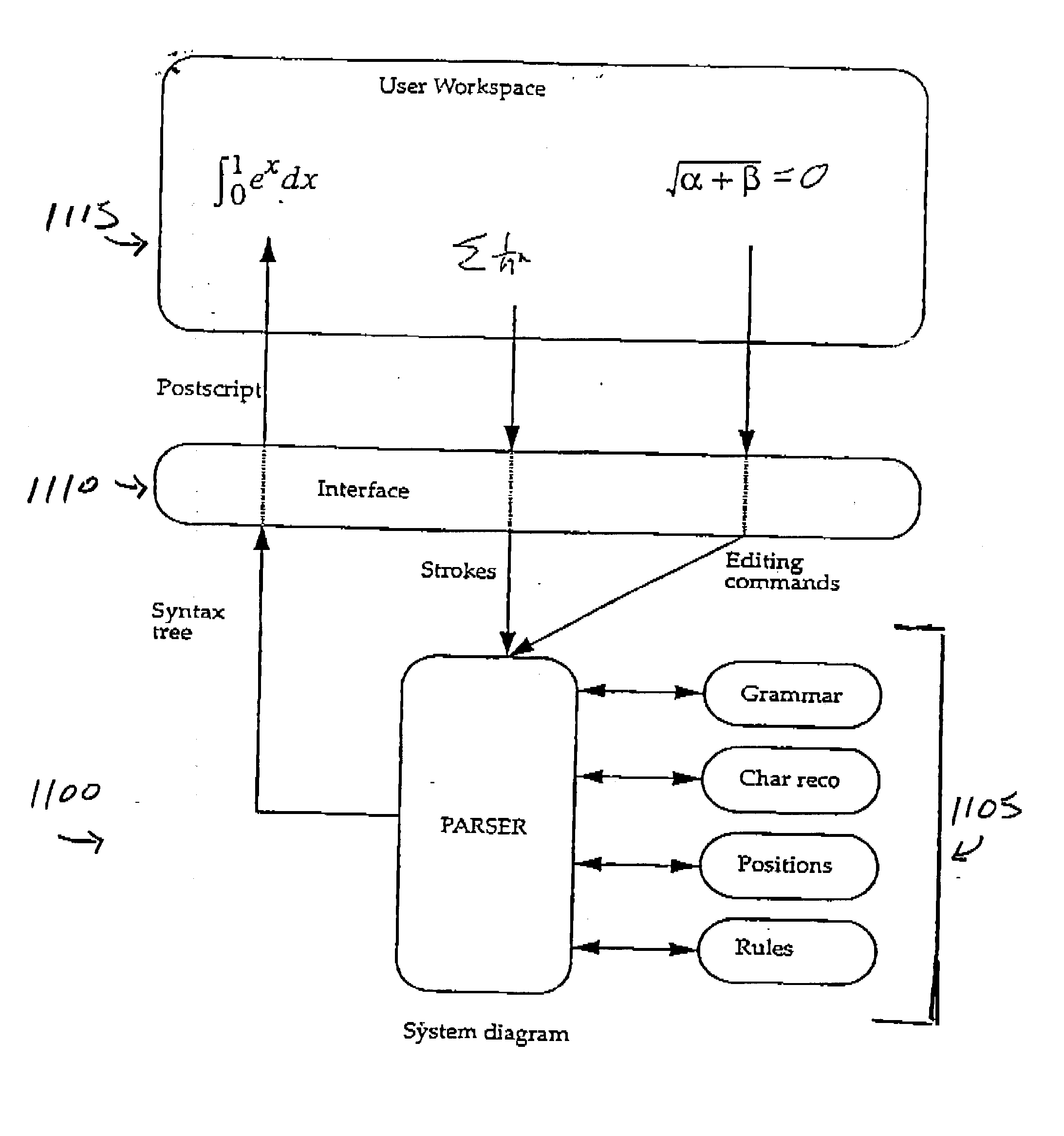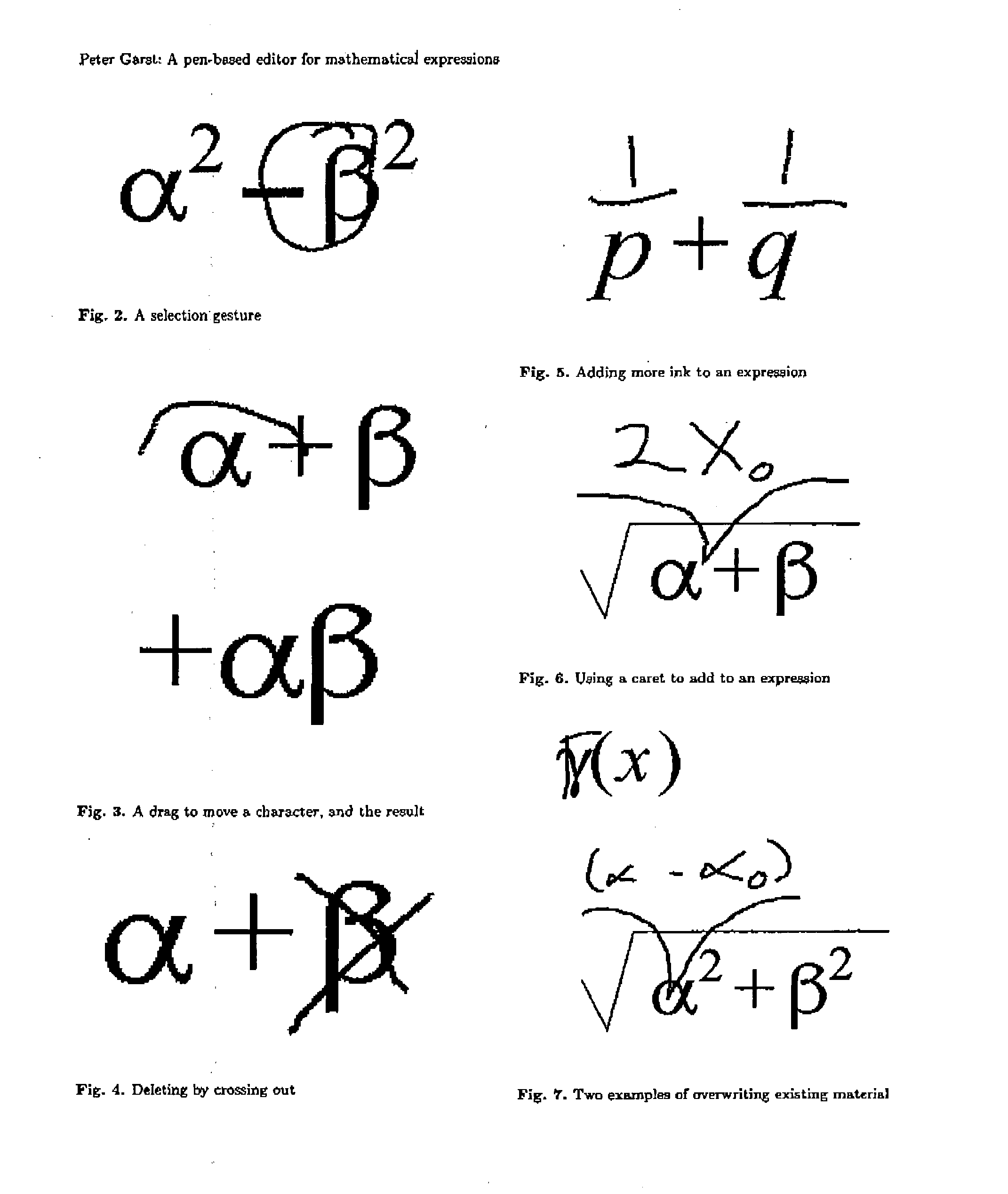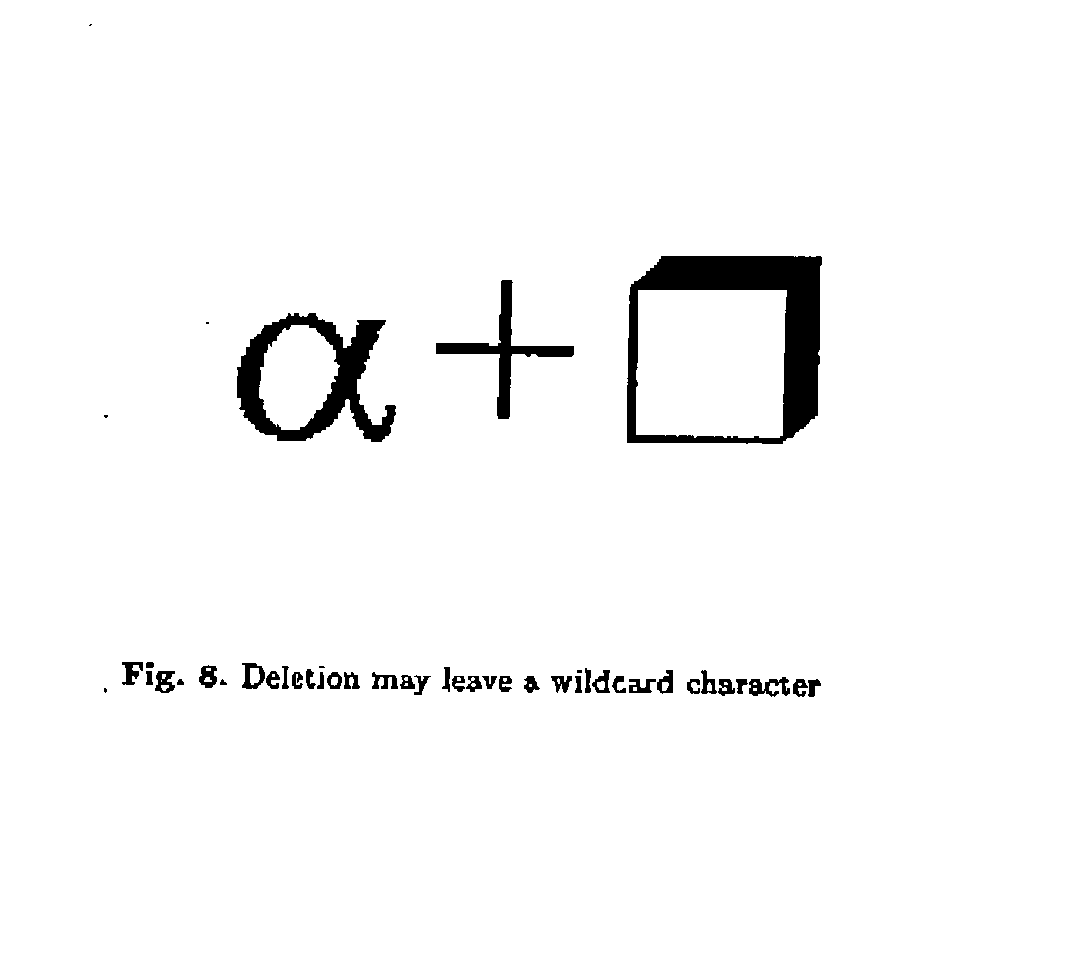Modeless gesture driven editor for handwritten mathematical expressions
a gesture-driven, editor-driven technology, applied in the field of data processing, can solve the problems of no reasonable way to keep the two versions in sync, large cognitive burden for users, persistent confusion between the modes, etc., and achieve the effect of small overlap between the methods of the two editors
- Summary
- Abstract
- Description
- Claims
- Application Information
AI Technical Summary
Benefits of technology
Problems solved by technology
Method used
Image
Examples
an example
[0098] Consider a typical editing scenario. Suppose the user adds more ink to an existing expression, as in FIG. 5. Consider the character information available in this parse. Some of the characters--the ones in the existing text--are known, and some are just present as ink and are not known. In terms of the character scores for the parse, if matching a text character there is no uncertainty, and the score is either perfect or impossible. If matching ink against a character, the character score is generated by a character recognizer.
[0099] Thus in this example the input sequence to the parser is not a sequence of strokes, but rather the following sequence having a mixture of text and ink:
[0100] stroke stroke p+stroke stroke q
[0101] Where a parser for a textual language would take a character sequence as input, and a handwriting recognizer takes a stroke sequence as input, for the editor the input is a mixture of the two.
Conclusion
[0102] The editor uses a two step process to identify...
PUM
 Login to View More
Login to View More Abstract
Description
Claims
Application Information
 Login to View More
Login to View More - R&D
- Intellectual Property
- Life Sciences
- Materials
- Tech Scout
- Unparalleled Data Quality
- Higher Quality Content
- 60% Fewer Hallucinations
Browse by: Latest US Patents, China's latest patents, Technical Efficacy Thesaurus, Application Domain, Technology Topic, Popular Technical Reports.
© 2025 PatSnap. All rights reserved.Legal|Privacy policy|Modern Slavery Act Transparency Statement|Sitemap|About US| Contact US: help@patsnap.com



